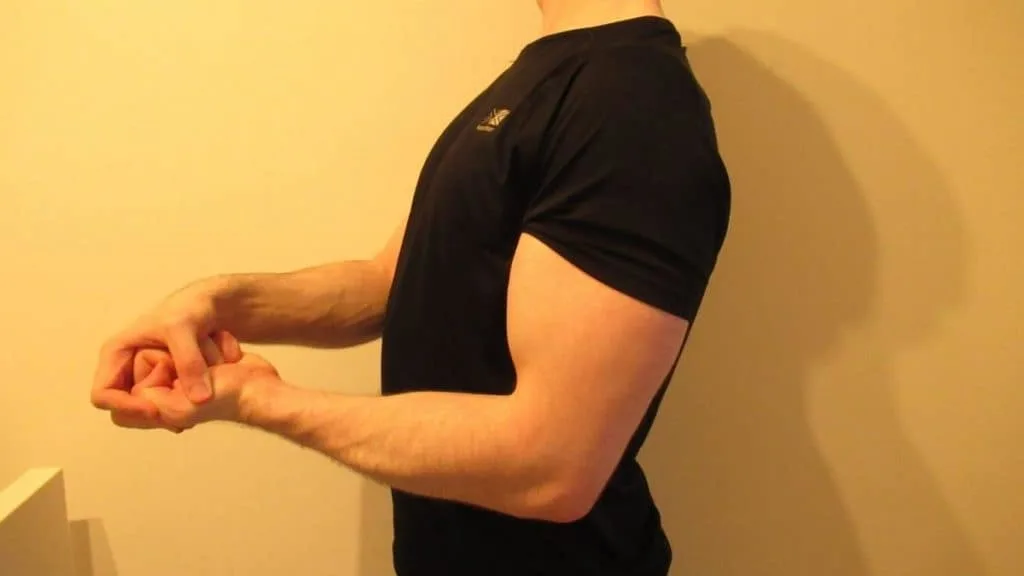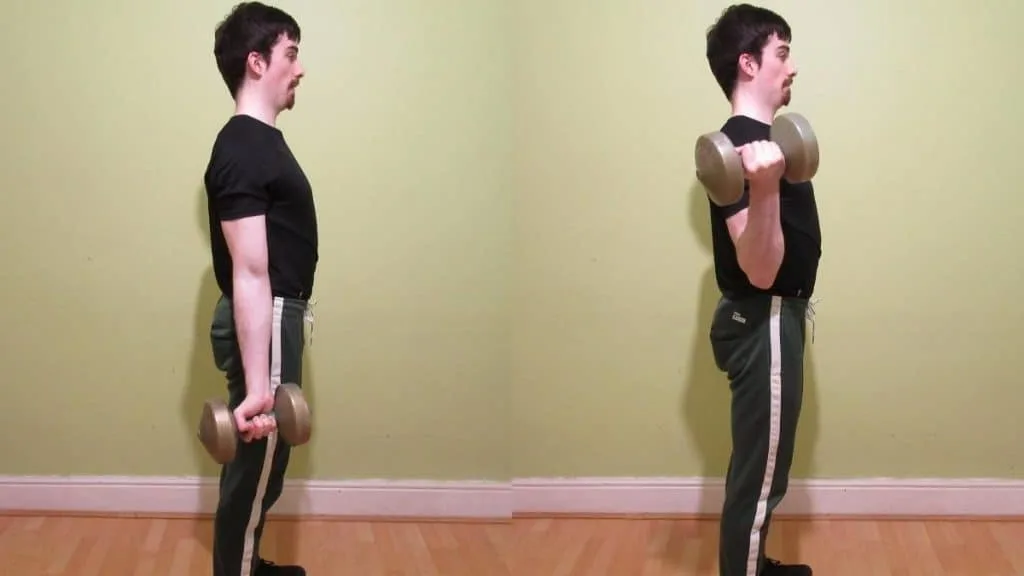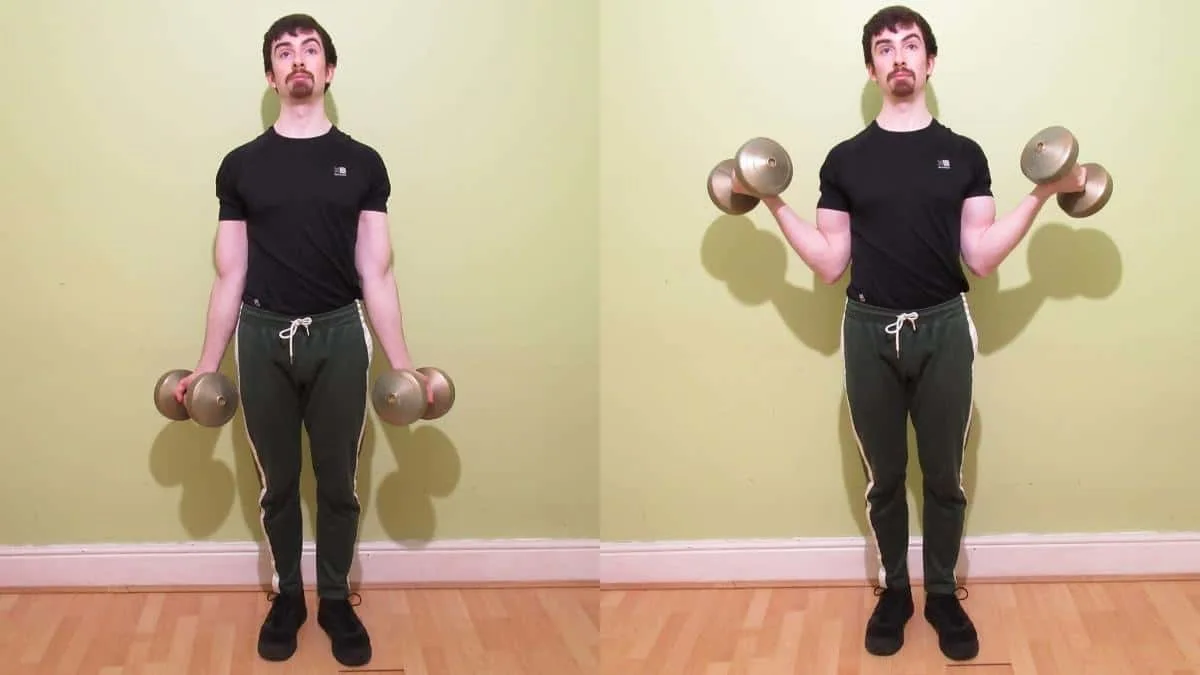As you may already know, the biceps musculature does more than just flex the elbow. It supinates the forearm and assists the shoulders with flexion and abduction. That’s why no money curls are so effective.
The no money curl forces you to supinate your wrists more than usual, which intensifies the peak contraction, and they also have you curl with your arms flared out the sides, which shifts the emphasis of the exercise onto the short (inner) head of your biceps.
This movement was invented by Jeff Cavaliere MSPT, CSCS, and became popular all the way back in 2011. Today, we’re going to show you how to perform these “got no money dumbbell curls” with the perfect form. Then we’ll discuss the benefits of the exercise.
No money curl exercise details
- Also Known As: Inner biceps curl
- Main Muscles: Biceps brachii
- Secondary Muscles: Brachioradialis, brachialis, forearm flexors, infraspinatus
- Exercise Type: Strength
- Exercise Mechanics: Isolation
- Difficulty Level: Intermediate
- Equipment Needed: Dumbbells
How to do no money curls
- Grab a pair of dumbbells with an underhand grip, and then hold them by your sides.
- Place your shoulders into external rotation (point your elbows inward).
- Curl the weights up and supinate your wrists forcefully by rotating your little fingers away from the midline of your body.
- Contract your biceps and then lower the weights back down under control until your elbows reach full extension.
- Repeat for 3-5 sets of 6-12 reps.
Benefits of no money curls
Dumbbell no money curls are ultra-convenient because you can perform them anywhere as long as you have access to a pair of weights. But besides being accessible, DB no money curls have some major benefits for your body as well.
Strengthens the rotator cuffs

The no money curl isometrically trains the infraspinatus, which is a rotator cuff muscle that externally rotates the humerus. It’s also a muscle that most lifters usually overlook in favor of more visible body parts, the biceps being a prime example.
Of course, if you want to strengthen your rotator cuffs as much as possible, then you shouldn’t just rely on no money curls. After all, there are three other rotator cuff muscles that need training as well.
Nonetheless, it makes you feel like less of a gym bro and more of an intelligent lifter whenever you give attention to critically important muscles—however small they may be—like the infraspinatus.
Builds better biceps

No money curls, as the name suggests, mimic the hand movement that you’d perform if you were asked for money and didn’t have any. This means that you’re naturally curling with your arms further apart and your elbows pointing inward.
As a result, the movement biomechanically shifts the tension onto the inner muscle fibers of your biceps. So in this regard, it’s the opposite of waiter curls, which emphasize the long (outer) head of your biceps by making you lift the weight with a very narrow (and very unique, might I add) grip on the dumbbell.
No money curls also force you to supinate your wrists harder than usual to keep your forearms in line with your biceps. This intensifies the peak contraction and makes each rep even more challenging; hence you can get results from this exercise with surprisingly little resistance.
In conclusion

If standard bicep curls are starting to feel stale and you want to improve your mind-muscle connection, then no money curls are a great exercise to perform. All you need is a pair of weights and 10 minutes of time.
It’s also an incredibly versatile exercise in the sense that it works at any rep range. Plus, the mere fact that you’re using dumbbells means that it’s highly effective for making sure that your biceps grow in proportion.

